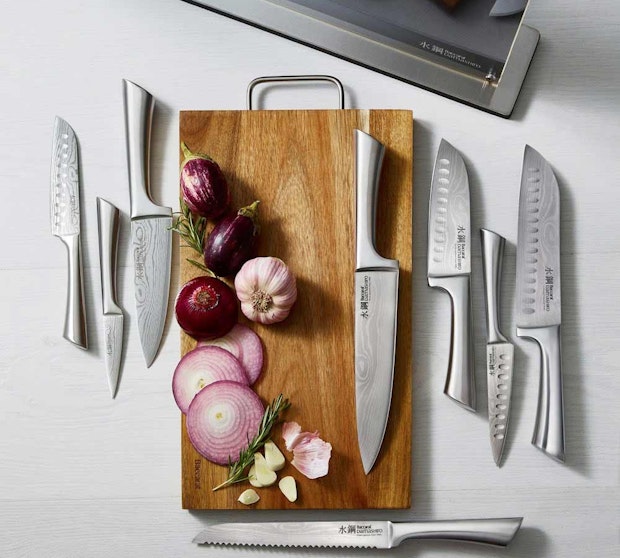From chopping to slicing, here's your definitive guide on kitchen knives!
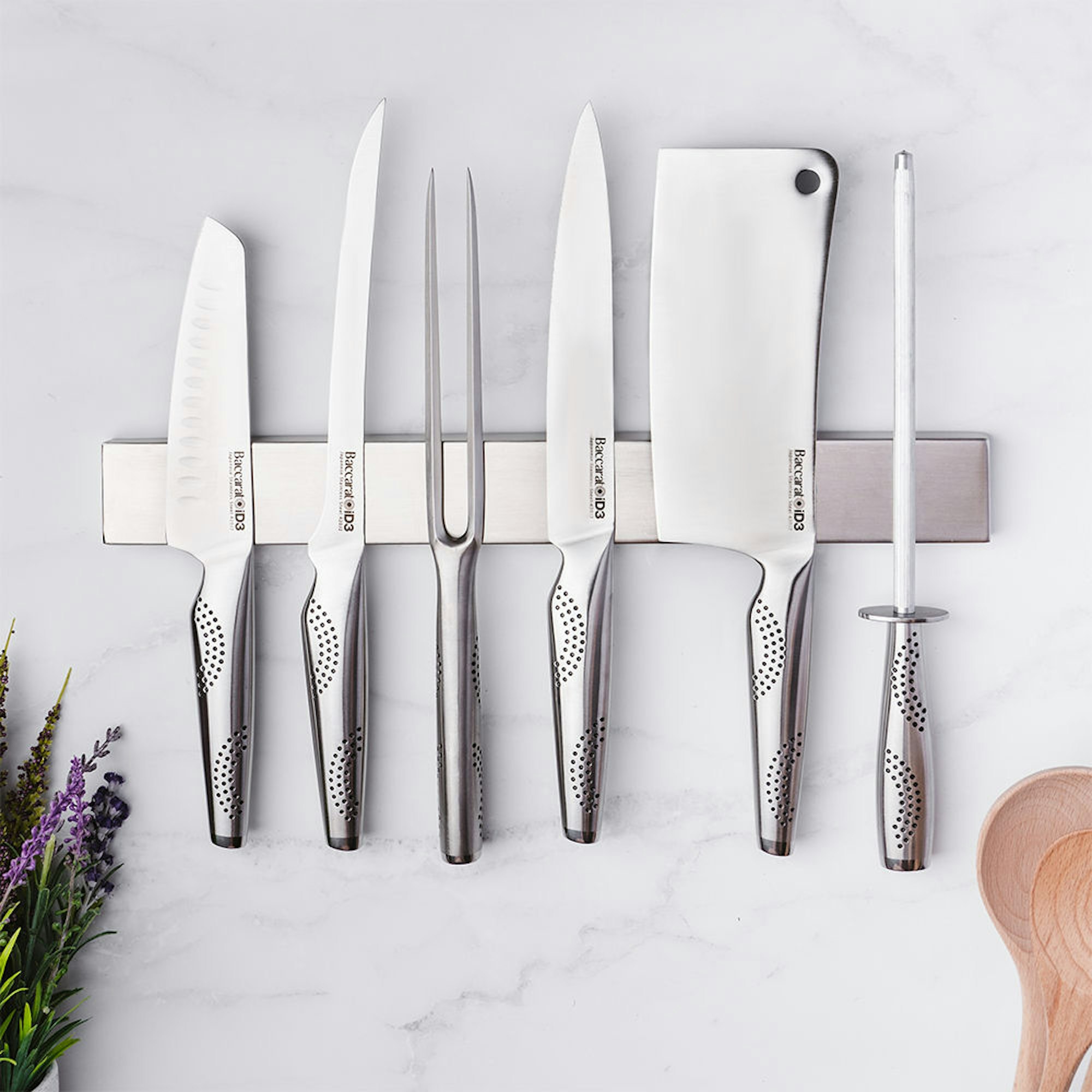
There's no longer a single knife for all occasions, these days, there is a knife purposely built for a specific requirement in the kitchen.
Like many things in life, knives come in all different shapes and sizes. Each knife has a specific purpose in the kitchen to effectively and efficiently get the job done. Below you will learn the many different types of knives, their purpose, what they are made from and how to properly care for them, to maximise their lifespan.
What are the different knife types?
A paring knife is a small knife with a plain edge blade that is ideal for peeling and other small or intricate work like deveining a shrimp, ‘skinning’ mushrooms or cutting small garnishes.
A medium-sized all purpose knife. Ideal for common kitchen functions such as cutting cheese, chopping fruit and vegetables, and slicing fish.
A small all purpose knife for general tasks in the kitchen. This quintessential knife is useful for making classic cuts such as julienne, dice and fine chop and can be used for fruits, vegetables, meats and fish.
The Santoku excels at chopping up hard and soft vegetable, meats, and just about any semi-soft food. The recesses situated above the blade edge helps to release the thin slices and sticky food after slicing.
Also known as a cook’s knife, the chef’s knife is an all purpose knife that is curved to allow the cook to rock the knife on the cutting board for a more precise cut.
The serrated blade edge of the bread knife allows you to cut soft bread without crushing it. Serrations help when cutting things that are hard on the outside and soft on the inside like bread and tomatoes.
Great for carving thick slices of meats, fruits and vegetables. Narrower than a chefs knife and with a curved blade profile, helps to follow contours and guide meat away from the bone. This knife allows for more precise cuts.
A filleting blade is uniquely designed to be flexible and thinner allowing it to bend around contours and hard surfaces with ease. Perfect for slicing fillets and removing skin producing a neater and precise cut.
This blade will change the way you handle meats and is designed for portioning poultry, larger and smaller cuts of meats. Engineered to be weighted making chopping through bones and joints easier.
This set is perfect for carving and serving meats with ease. The knife’s curved blade profile help to follow contours and guide meat away from the bone. The carving fork is perfect for holding meat in place while slicing and helps to transfer food to plate.
Kitchen shears are a perfect addition to any cooks kitchen with an easy motion spring-loaded action and safety lock. The blade angle is perfect for trimming, snipping whilst being able to power through meat and gristle. The curved blades, allow for easier cutting around bones and tricky hard-to-reach places.
Perfect for keeping knives sharp and at the ready. The forged steel works to restore a blades, razor sharp cutting edge.
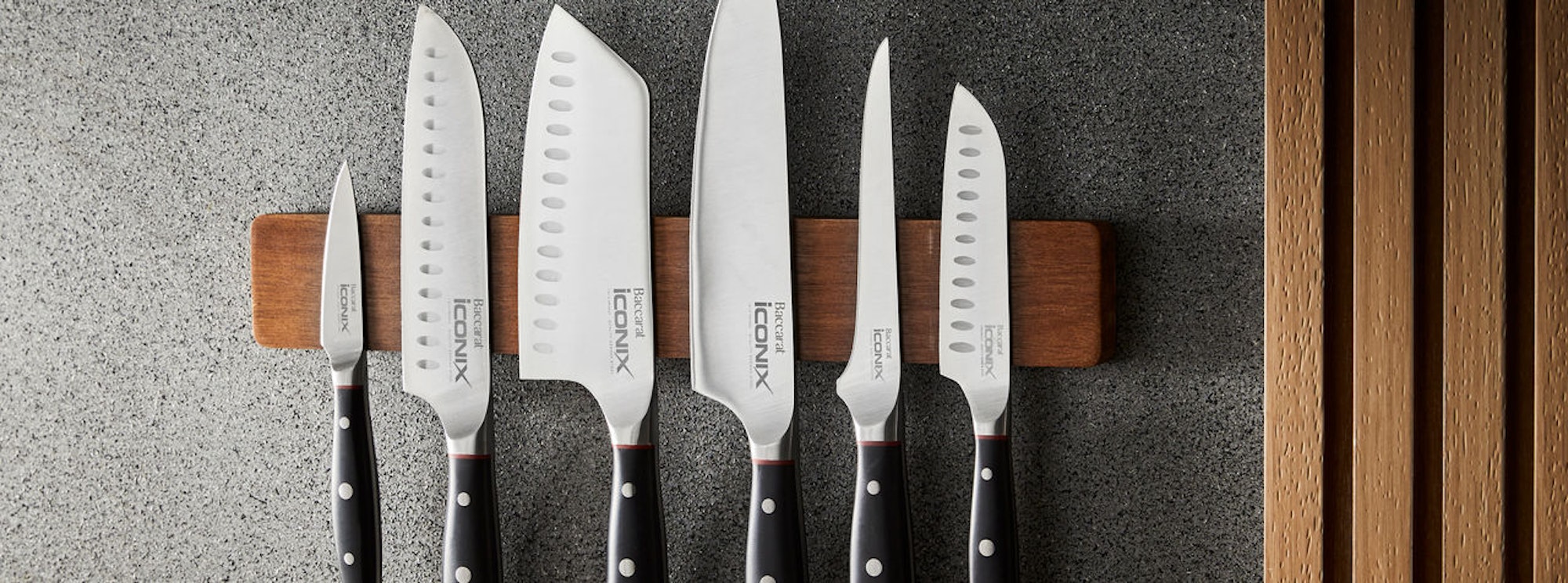
What is the difference between Japanese Steel & German Steel knives?
German steel knives are made with exceptional craftsmanship, durability, and versatility. Ideally, German Steel knives excel at slicing, trimming, portioning & cutting. German steel knives tend to be thicker, allowing for easy cutting of thick meat and dense vegetables and require less sharpening. Japanese steel knives are a popular choice for knives due to their exceptional sharpness, durability, rust resistance, unique properties, precision cutting, lightweight and aesthetics. Japanese steel knives tend to be thinner, allowing finer cuts of food but require frequent sharpening.
Japanese Steel Technical Details
- Manufactured from 420J2 Stainless Steel
- Iced hardened - Ice tempering process to increase the hardness of the blade
- Twice sharpened
- Thinner blade which means there is less of a wedge to drag through the food, cutting finer food easier
- 53 HRC - Softer Steel
- Softer steel requires additional sharpening
- Easy to sharpen
German Steel Technical Details
- Manufactured from 1.4116 Stainless Steel
- Iced hardened - Ice tempering process to increase the hardness of the blade
- Twice sharpened
- Thicker blade which means there is more of a wedge making it easier to cut through tough meats and vegetables
- 55 HRC - Harder Steel
- Harder steel requires less sharpening
- Slightly harder to sharpen
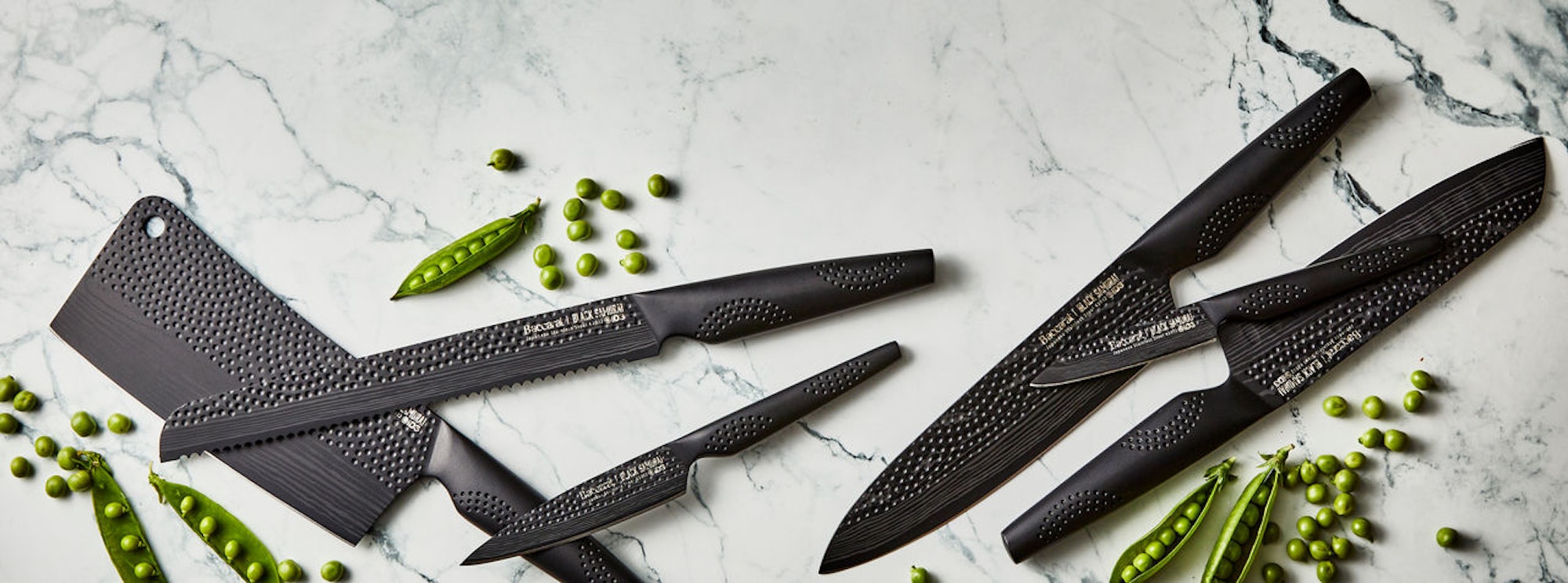
The Finer Details - Knife Technical Glossary
HRC - Rockwell Hardness Scale
Measures how much of a dent/mark a diamond point can make in the metal with a applied amount of weight. The smaller the mark the harder the steel. A good knife will measure from 52 to 55.
Ice Hardened
To increase the hardness of the metal blade the steel is put through an ice tempering process.
Blade Angle
Blade angles can vary in degrees with 15-20 degrees being the most versatile across all our ranges.
Full Tang Handle
When the metal blade extends through the handle allowing for increased force and leverage when cutting.
Triple Riveted
The best way to secure the polymer & wooden handles to the full tang handle.
One-Piece Seamless Stainless Steel Handle
Stainless steel handles are the most durable of all handles, as well as the most sanitary. They are weighted to create balance in the middle of the knife.
Second Sharpening Process
The blade is sharpened twice during the manufacturing process increasing sharpness by 10%.
Static "V" Sharpener
The knife blade sharpening tool is in the shape of a letter “V” that does not move, allowing a 15-20 degree angle to suit our knives.
Static "Wheel" Sharpener
The knife blade sharpening tool is a wheel with a “V” shaped groove designed to last longer than a static cutter.
How do I properly care for my kitchen knives?
So far we have learnt the many different types of kitchen knives, including their individual purposes. We have also learnt the different types of materials used to manufacturer kitchen knives but how do we properly care for them to maximise their durability and lifespan. Continue reading to find out!
Storing Your Knife
Remember your knife is sharp, so handle with care and keep out of reach of children. Our knives are designed to be stored in their customised gift box or in a knife block. This is safer for you and better for your knives.
Using Your Knife
Always cut straight through with a smooth action and never twist the blade. This may result in blade damage. Remember your knives do have limitations and are not indestructible. Do not use your knife as a screwdriver, can opener, jimmy, hammer, oyster opener or chisel (you can buy all of these tools at your local hardware store for much less). Never use your knife to cut through frozen foods or bones as you will break or chip the blade. There are special purpose knives for these tasks. Always use a wooden or soft plastic chopping board - not a glass or ceramic board. Never cut directly on your bench top, stainless steel sink or plate.
Care of Your Blade Edge
The key to proper and efficient use of any knife is looking after and maintaining the blade. A knife with a sharp blade is both easier and safer to use because it requires less pressure to cut. Sharpen your knives with a knife sharpener on a regular basis to maintain the sharp edge. After sharpening your knives always wash them in hot water and towel dry.
Cleaning Your Knife
- Your knife is rust resistant but not rust proof, this is not a fault of manufacture, it is merely a characteristic of metal that also gives your knife the ability to maintain a super hard edge.
- Never wash your knife in the dishwasher. The harsh chemicals and hot temperature will ruin the quality of the blade and deteriorate the handle.
- After each use, wash your knife by hand under running water with a soft sponge and mild detergent if needed.
- Avoid detergents with any form of chlorine.
- After washing, fully dry with a clean cloth, do not store unless fully dry.
- Never leave your knives to drip dry.
- If you cut fruits and vegetables that are quite acidic eg; lemons, oranges, tomatoes, make sure you rinse your knife immediately after use. If you do not it may result in staining and corrosion of the blade.
- Water spots or surface rust can be easily removed with a soft sponge and mild detergent.
- Due to the unique nature of wooden handles, it can be subjected to change in colour over time.
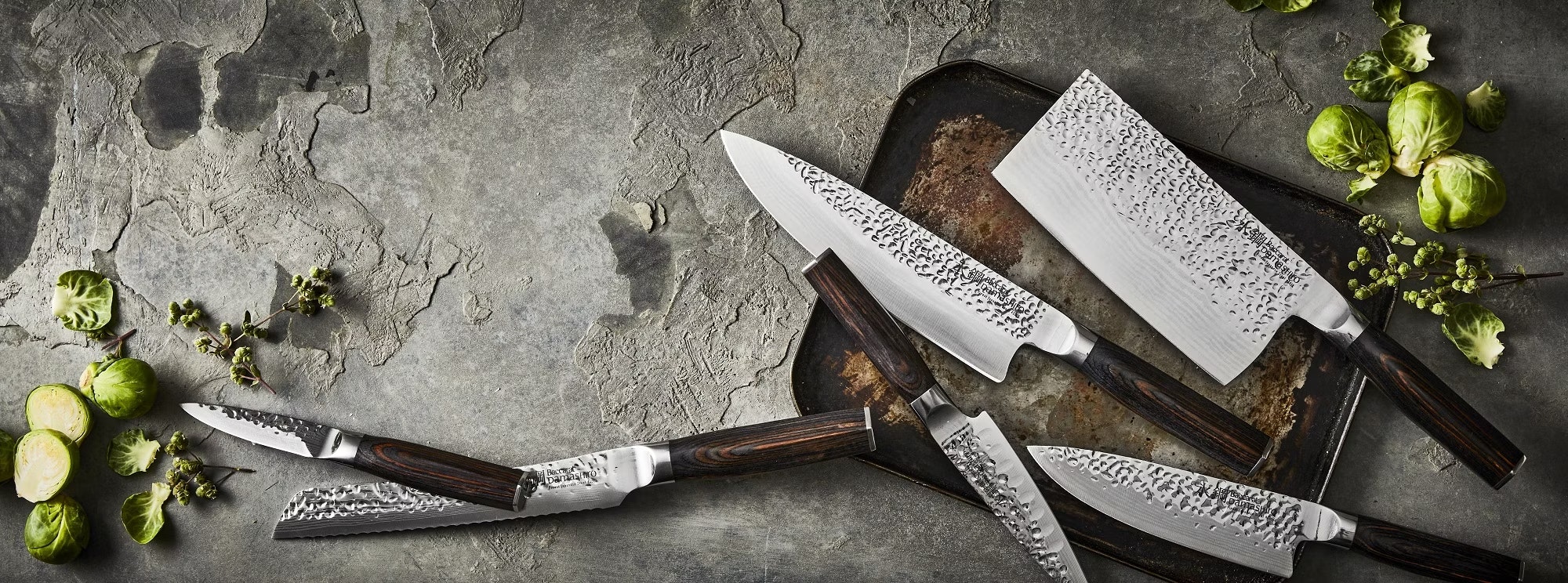
The Baccarat Knife Range
The extensive Baccarat® knife range comes in many different styles and finishes. Whether you're a beginner, home chef or a professional chef, you'll be able to find the right knives. Discover the Baccarat Knives range below.
Premium Japanese Knives
Premium German Knives
High Quality Ranges
For a detailed breakdown of the different Baccarat Knives range, please visit our Your Comprehensive Guide to the Baccarat Knife Range article.
Back to blog